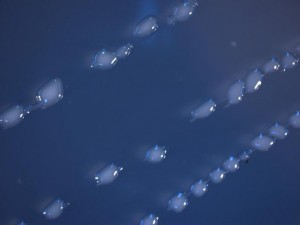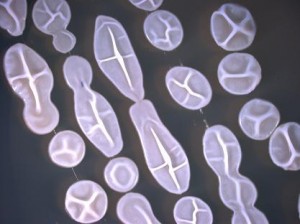Transport of microbial particles in aquifers

Groundwater is a significant drinking water source across the globe, and all such groundwater starts out as surface water at some point. As water infiltrates and moves through an aquifer, the porous subsurface acts like a natural filter to remove contaminants. As a result, groundwater that has traveled far and been hydrologically isolated from the surface for a long time after initial infiltration is usually of higher microbial quality. Groundwater with shorter residence time is a more renewable resource, but the higher degree of connection with the land surface makes these aquifers more susceptible to contamination by pollutants ubiquitous in surface waters, including anthropogenic chemicals and pathogenic microorganisms. The transport and removal of contaminants in groundwater has consequently been the subject of much research.
Microbial respiration in the saturated zone depletes dissolved oxygen as the organisms degrade available organic material that enters the aquifer with infiltrating surface water. As the water moves deeper into the subsurface, if the oxygen supply is exhausted before the carbon runs out then bacteria must turn to alternate terminal electron acceptors (nitrate, ferric iron, sulfate, etc.) in order to continue respiration. This can lead to “redox” zonation in an aquifer, as the water passes through regions with different microbial communities exploiting sequentially less energy-efficient terminal electron accepting processes. These different zones may range in size from the pore scale to the macro scale.

The fate of a particular pathogenic microbial particle in an aquifer depends on how quickly the organism will lose viability and how effectively it will be filtered out. Physical, chemical, and biological factors contribute to both of these removal mechanisms, but our understanding of the complex and extremely varied interplay between such factors in natural systems is incomplete. In an attempt to improve understanding of how changing biological characteristics and water chemistry across different redox zones may affect the transport of pathogens, the Bouwer group has investigated the surface characteristics of organisms grown with different terminal electron acceptors. Further investigations use mathematical models to explore how spatial heterogeneity in biologically-determined parameters could affect pathogen transport.
